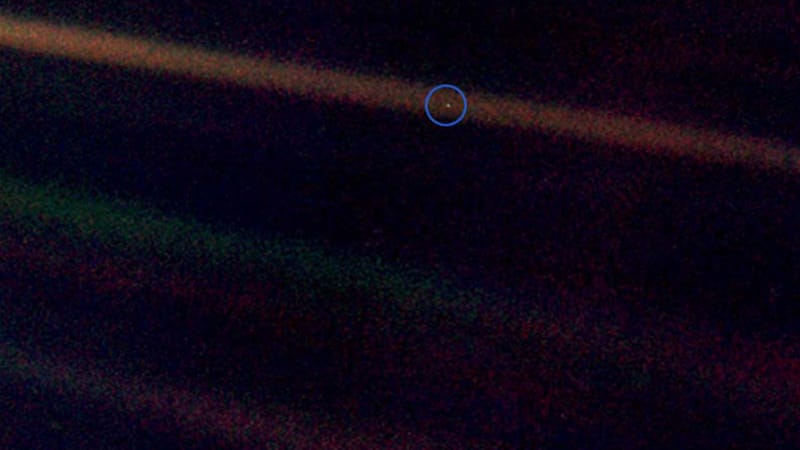 On February 14th this year, space enthusiasts celebrated the 30th anniversary of a very special photograph -- a speck of dust caught in a beam of light.
On February 14th this year, space enthusiasts celebrated the 30th anniversary of a very special photograph -- a speck of dust caught in a beam of light.
This "Pale Blue Dot" is a photo of Earth taken from a distance of 3.7 billion miles) by NASA’s Voyager 1 space probe as it headed out of our solar system. Our Earth takes up a mere one-tenth of a pixel; the rest of the picture is layered beams of scattered light against the empty darkness of space.
It is a reminder of how isolated we are in the universe — but also how, in this isolated space of existence, those of us on planet Earth are all in this together.
How Was The Image Captured?
 The idea for this photo was first suggested by Carl Sagan, an astronomer and science communicator who was part of the Voyager team.
The idea for this photo was first suggested by Carl Sagan, an astronomer and science communicator who was part of the Voyager team.
Originally, the Voyager mission was sent to tour the gas giants of the solar system — namely, Jupiter, Saturn, Uranus, and Neptune. Voyager 2 was released first, followed a few weeks later by the identical Voyager 1, back in 1977.
After the two space probes completed their turn around Neptune, the mission was done; in order to save power, the Voyager team chose to turn off the probes’ cameras, starting again with Voyager 2.
As per Sagan’s proposal, the cameras of Voyager 1 were left on just long enough to capture a 60-photo set of the planets and the Sun — and about half an hour before the cameras were permanently shut down, on February 14th, 1990, Voyager 1 shot the iconic Pale Blue Dot.
It is a reminder of how isolated we are in the universe -- there is only one habitable planet in our universe known to sustain over 7 billion people. Humanity must work together to preserve Earth rather than encourage conflict. As Sagan explains in the video below, this single dot is where “everyone you love, everyone you know, everyone you ever heard of, every human being who ever was, lived out their lives — on a mote of dust suspended in a sunbeam.”
Sources: Space.com, The Atlantic, NASA, National Geographic, The Planetary Society









